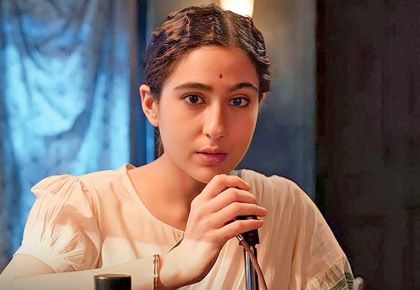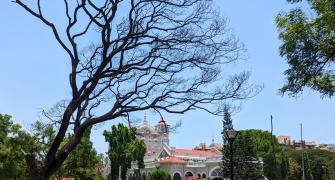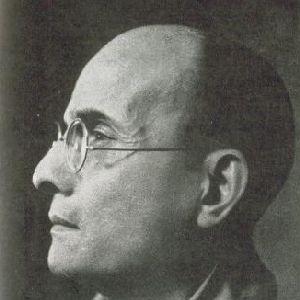As Ae Watan Mere Watan and Swatantra Veer Savarkar release this week, Utkarsh Mishra takes us down history and reminds us about India's freedom struggle.

On the morning of August 9, 1942, hours after the Indian National Congress had adopted the Quit India resolution at the historic meeting in Mumbai (then Bombay), and Mahatma Gandhi gave a call to 'Do or Die', the British government cracked down on the movement with utmost brutality.
The Congress's top leaders were arrested and Congress committees were declared unlawful.
In this situation, the responsibility to continue the movement fell on the shoulders of Congress workers and the common people, apart from a few leaders who had escaped arrest.
One such Gandhian freedom fighter was Usha Mehta, who was all of 22 at that time.
When rigorous control was imposed over the publication of news, Mehta, along with a few colleagues, started an underground radio station, called Congress Radio, and broadcast news related to the movement, speeches, appeals and instruction to the workers in the struggle.
She did it every day till her arrest on November 12, 1942.
Although her role in India's national movement did not go completely unsung -- she was conferred with the Padma Vibhushan in 1998 -- her story, and that of many others like her, needs to retold to Gen Z, to keep them reminded of the sacrifices countless of their ancestors made to bring the dawn of freedom they so cherish.
Kannan Iyer's new release Ae Watan Mere Watan seeks to do this job.
It is, therefore, pertinent to recall those times and what it took for freedom fighters like Mehta to do what they did.
India of 1942 and the 'Quit India' movement

With the failure of Cripps Mission in April 1942, Gandhi and the Congress lost all patience and, on August 7, 1942, the 'Quit India' resolution was passed with an overwhelming majority and the 'fight unto death' began.
However, as Maulana Azad wrote in his autobiography, with World War II in progress, 'the British would not tolerate an organised movement of resistance' in India.
In fact, the government had already prepared for a crackdown even before the August 8 declaration and was ready to 'nip any active rebellion in the bud'.
And so it happened.
All eminent Congress leaders were arrested 'before the next day dawned'.
Within a week, almost everyone who mattered in the Congress organisation was in jail. Provincial, district and even taluk leaders of the Congress were arrested. Congress committees were declared unlawful and their funds were confiscated.
All political activities, however peaceful, were considered revolutionary and declared illegal. As historian Bipan Chandra has written, 'the repression... was most brutal that had ever been used against the national movement'.
Stringent curbs were imposed over the publication of news and Congress newspapers like National Herald and Gandhi's Harijan were banned.
However, in words of historian R C Majumdar, '...if the government had thought or hoped that by this means they would be able to crush the movement, they soon found out their mistake. They had made a profound miscalculation about the state of popular feeling and the hold of the Congress on the Indian public'.
There were 'popular demonstrations in the shape of meetings, hartals and processions over nearly the whole of India'.
Popular discontent, war-time shortages and consequent price rise, an unprecedented distrust of the British government and the growing feeling of an eminent British collapse in the war had turned the people of India towards the national movement in large numbers.
Not everyone joined, though

Let us take a moment to also look at those who took no part in this struggle.
Since another biopic is being released this week, that of Vinayak Damodar Savarkar, starring and directed by Randeep Hooda, it would not be out of place to recount what Savarkar and his Hindu Mahasabha were up to when most of India up in arms against the British.
In the wake of the Quit India resolution, Savarkar instructed Hindu Sabhaites who happened to be 'members of municipalities, local bodies, legislatures or those serving in the army... to stick to their posts' across the country. He had earlier urged the Viceroy to 'appoint Mahasabhaites to the advisory councils of the government and the war committees in India'.
The Mahasabha boycotted the Quit India movement.
Another prominent leader of the Mahasabha, Syama Prasad Mukherjee, wrote to the governor of Bengal that the administration should take such measures that 'in spite of the best efforts of the Congress, this movement will fail'. Instead, the Mahasabha focused on 'fighting the internal enemies -- the Congress and Muslims'.
The Mahasabha, under Savarkar's presidency, did not hesitate in joining hands with the Muslim League to form provincial governments in Sindh and North West Frontier Province in 1942-1943.
Usha Mehta and the Congress Radio

As stated earlier, the government had imposed strict regulations on the press and it was not possible to disseminate news about the movement.
In such a situation, underground networks were being consolidated in various parts of the country. In Bombay, 22-year-old Usha Mehta with a few of her colleagues started an underground radio station to amplify Gandhi's message.
Mehta recounted those day in an interview in 1969, '...Our perusal of the history of the past campaigns had convinced us that a transmitter of our own was perhaps one of the most important requirements for the success of the movement. When the press is gagged and all news banned, a transmitter certainly helps a good deal in furnishing the public with the facts of the happenings and in spreading the message of rebellion in the remotest corners of the country.'
She approached a technician friend who built a transmitter for them.
'Our first announcement was on August 14, 1942. The announcement was 'This is the Congress Radio, calling on 42.34 metres from somewhere in India'. This announcement was almost the realisation of 'a long-cherished dream for all of us', Mehta recalled.
The radio was operated clandestinely from different parts of Bombay. Mehta said later that they used to shift from place to place to avoid arrest and forfeiture.
On August 17, her team was called upon by Dr Ram Manohar Lohia, a prominent member for the all-India underground leadership that was formed at that time. Thereafter, 'Lohia regularly broadcast on this radio'.
The broadcast 'used to begin with Hindustan Hamara and end with Vande Matram. In between, we had news relays, speeches, appeals and instructions for the workers in the struggle... we used to get news from all over India by special messengers. Also, the office of the All India Congress Committe, which was in Bombay then, used to supply us with important news...News item was a daily feature of our daily programme,' Mehta recounted in the 1969 interview.
Among the news they broadcast were reports about Japanese air raids in Chittagong; the strike of Jamshedpur steel workers on August 30, 1942; police atrocities in the Ashti and Chimur villages of Maharashtra where the movement was brutally suppressed; and the running of a parallel government Ballia (established on August 19, 1942 by Chittu Pandey, which lasted for a week).
Their daily broadcast went on as the government frantically searched for their location. In the end, it was the betrayal of a fellow technician that abruptly put an end to this valiant effort.
On November 12, 1942, the police discovered their location and raided the station as the broadcast was on. Mehta recounted later that as they kept hitting the doors to break them, the broadcast continued. The police could finally enter while Vande Mataram was being played.
Mehta and her colleagues were arrested.
The aftermath
In a 1997 interview, a year before she was conferred with the Padma Vibhushan, Mehta recalled the 'real mental torture' she underwent after her arrest. She was kept in an isolated cell and was interrogated for six months.
Attempts were made to lure her with offers of foreign education etc if she turned approver. But she did budge. Even in court, she did not answer any question and was sentenced to four years in prison.
She was released in March 1946.
She completed her PhD after her release and was appointed to teach at Bombay's Wilson College in 1950, where she served till 1980.
In an exclusive interview with Rediff.com's Archana Masih a few years before her death in 2000, she had said, "Our expectations have not been fulfilled. By and large, our dreams haven't come true... I do not think we have marched the way Gandhiji wanted us to."
In the 1997 Rediff.com interview, she had said, "This is not the freedom for which we sacrificed our all. Still, it is our duty to have faith in our nation, its value and vision. We must have faith in ourselves to do the best for our country."









